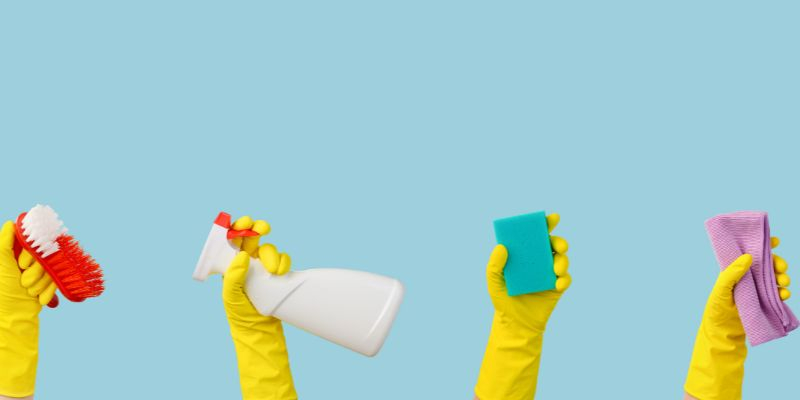What’s in your supermarket cleaners? A guide to understanding chemical ingredients
We often rely on a vast array of cleaning products readily available on supermarket shelves to keep our homes sparkling clean. It’s so normal that I doubt many of you even think about checking the label of ingredients. And if you do, it’s a minefield! It takes valuable time out of your day standing in the aisle trying to decipher the complex jargon and googling every single chemical on its long list.
That’s why we’ve summarised the main chemical ingredients found in traditional cleaning products, so next time your perusing the aisles, you’re armed with everything you need to know to make a safe decision for your family and the environment.
Common cleaning chemicals to avoid
Sodium Lauryl Sulfate & Sodium Laureth Sulfate/ Sodium Lauryl Ether Sulfate (SLS/ SLES):
One of the main ingredients in most laundry detergents, shampoo, hand wash and washing up liquid. Produced from petroleum and palm oil, it’s used to foam and remove dirt, but according to Healthline, it’s a controversial topic. SLS and SLES can irritate eyes, skin and lungs and it can be harmful to marine life when washed down the drain.
Chlorine bleach:
Used to whiten your laundry and commonly contained in toilet cleaners, it can be highly toxic to wildlife and soil and water quality.
Synthetic dyes:
Pretty much used to make things pretty or a certain colour, synthetic dyes produce toxic chemical waste that ends up in rivers and water sources, wreaking havoc with ecosystems. Although dyes have been used since ancient times, it was only in the 19th century that synthetic forms were commonly manufactured. Today, you can see the disaster first-hand outside of dye factories where the rivers have changed colours and the soil has become toxic.
Methylisothiazolinone (MI):
The synthetic chemical is commonly found in many household cleaners. It’s used to extend a product’s shelf life. Some research suggests that it can lead to sensitive skin (red rash or bumps) and cause respiratory problems.
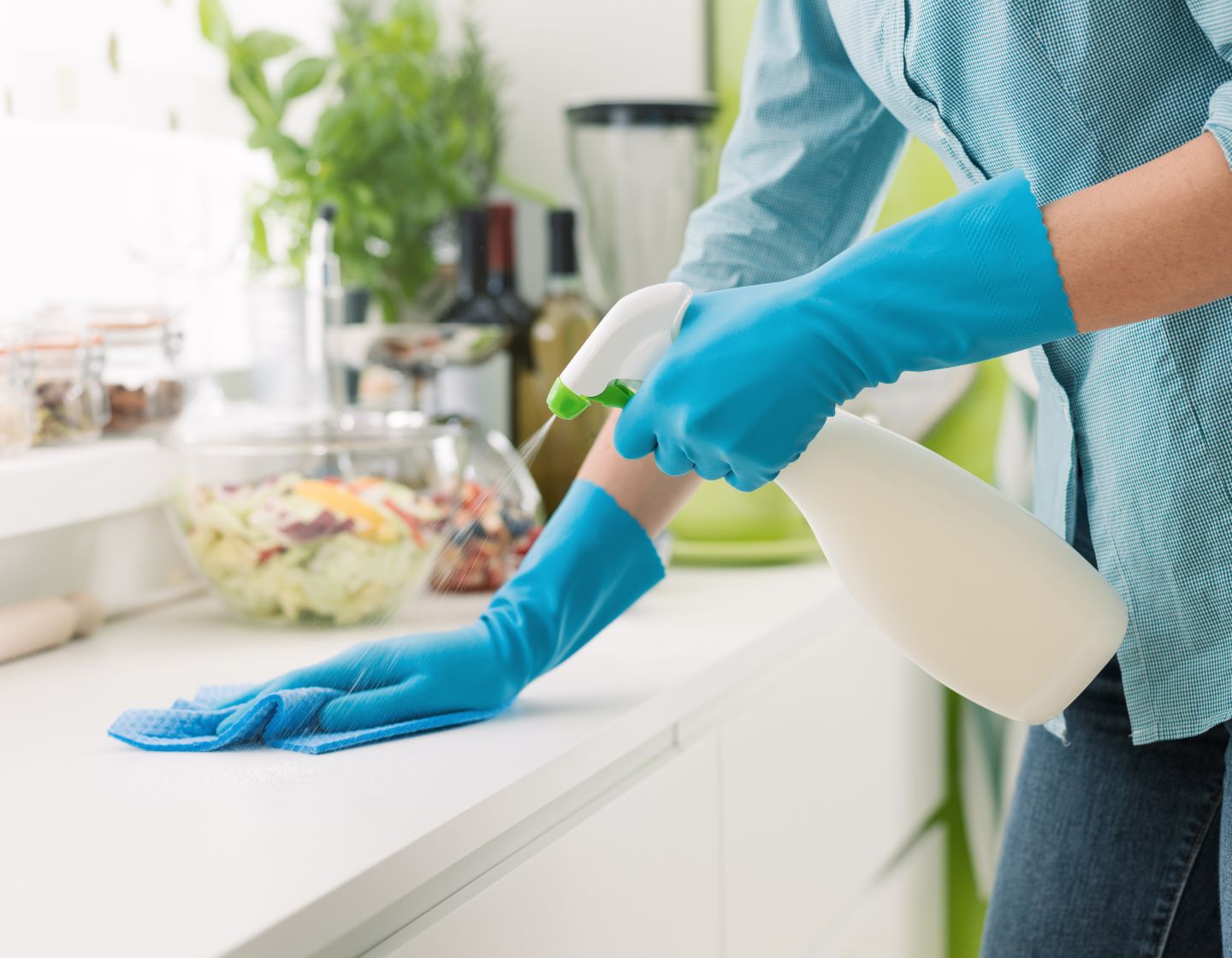
Phenoxyethanol:
A preservative that prevents the growth of yeast, bacteria and mould to extend shelf life. Many products have made the move from parabens to phenoxyethanol and the EU allows a maximum concentration of 1% in cosmetics. It’s not without its risks – it can leave behind toxic byproducts.
Phosphates:
Primarily used to deodorise clothing and water softening, phosphates are used in household laundry and dishwasher detergent. Even after passing through water treatment, small traces of chemicals can still find their way into bodies of water. When this happens, phosphates have a fertilising effect, triggering widespread growth of algae that absorbs the water’s oxygen and reduces biodiversity.
Synthetic perfumes:
These are manmade chemicals used to scent cleaning products. The main problem is that they are listed as this, without breaking down the specific chemicals. The hidden chemicals such as phthalates and parabens have been linked to skin irritation to hormone disruption and a range of environmental issues.
Phthalates:
To go into more depth, traces have been found all around us – in the air we breathe, the water we drink and the soil we walk on. According to studies, it’s been linked to the decline of amphibians and it’s toxic to aquatic organisms from algae to fish.
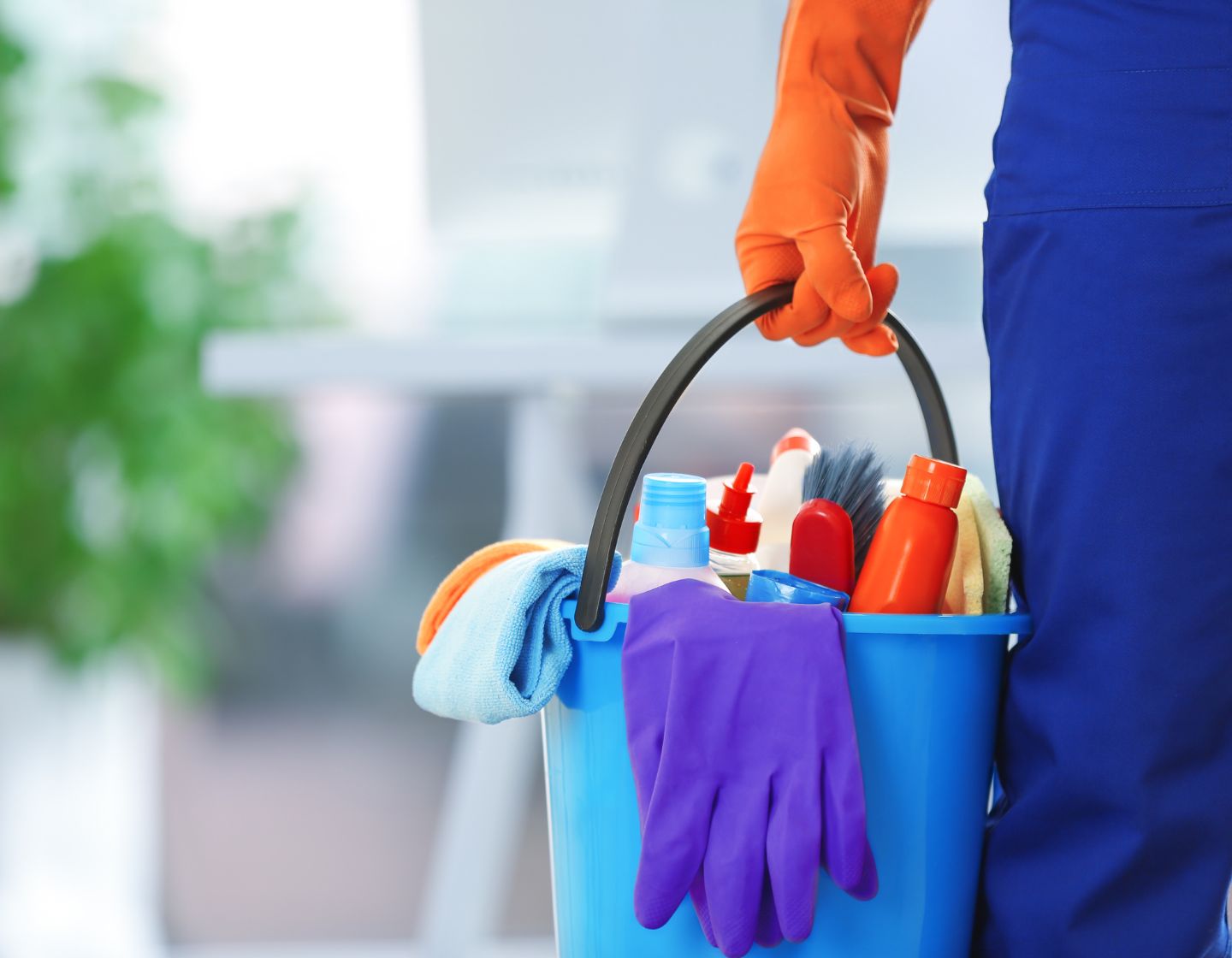
Enzymes:
Used to remove stains and breakdown dirt, they’re supposed to give your cleaning products a boost. They have been known to cause skin and eye irritation.
Optical brightness / fluorescent whitening agents (FWAs):
These synthetic chemicals are added to laundry detergents to make clothing appear whiter, brighter and cleaner. It works by transforming UV light waves to enhance blue light and minimise yellow light so things look whiter. It doesn’t biodegrade which means that it will remain in waterways for a long time, posting threats to aquatic life.
Chemical plasticisers:
Added to soaps to make them easier to machine mould into shapes, it can leak out of products and escape into the environment and your food. According to Yale University, plasticisers can disrupt natural hormones, inhibiting testosterone and enhancing estrogen.
Titanium dioxide:
This colourant is used to whiten and brighten clothes and it’s also commonly used in suncream. Back in 2018, scientists found that it was polluting beaches with the potential to harm marine life.
Triclosan:
This ingredient is added to some antibacterial soaps and body washes to reduce bacterial contamination. It’s regulated by the Food and Drug Administration (FDA) due to its potential health and environmental risks. Various studies have reported hormone disruption and accelerated development of liver disease.
Lye:
Found in oven cleaners and soap. While it’s biodegradable and will not harm your skin, it can cause severe corrosive burns to the throat and stomach if swallowed.
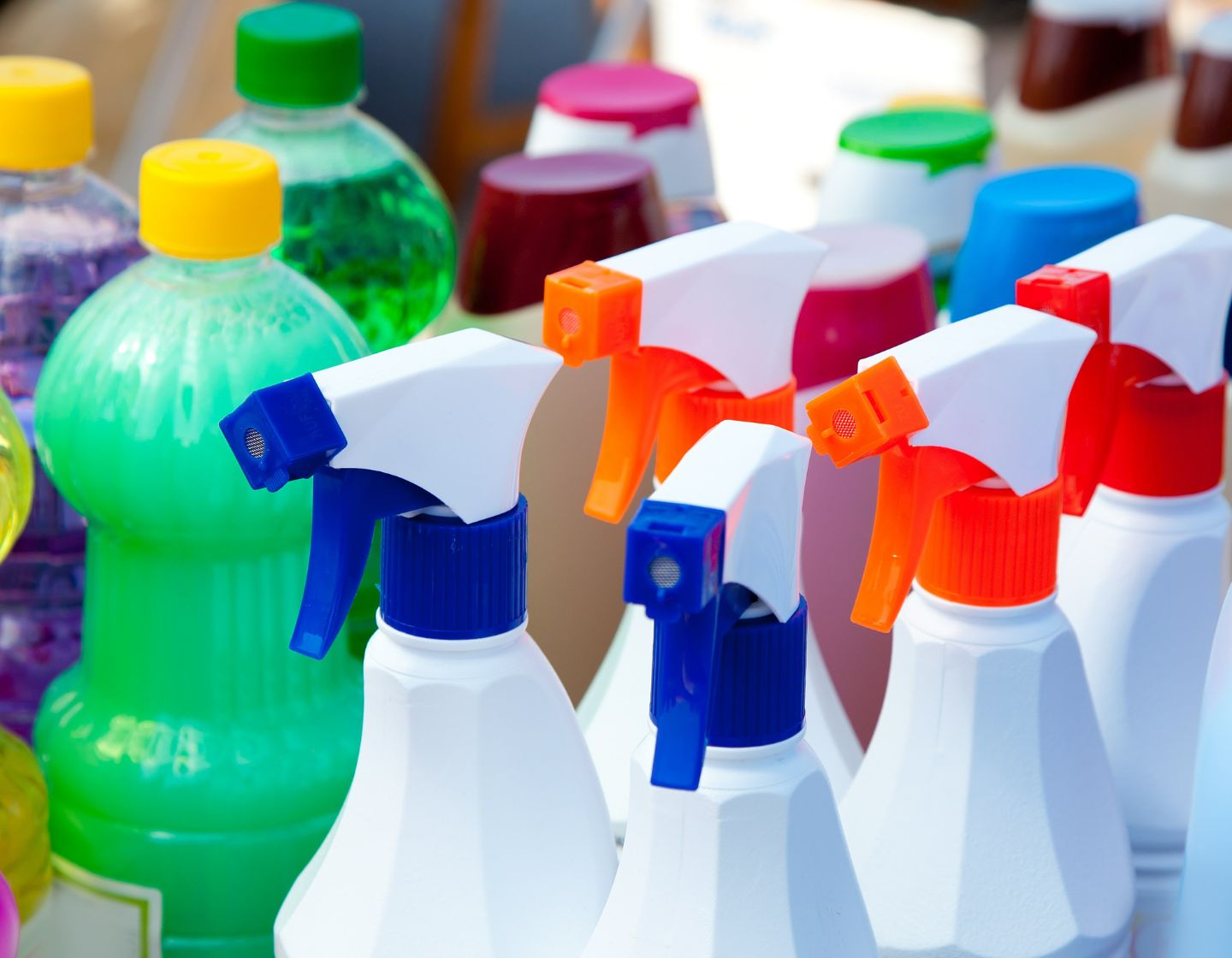
Ammonia:
Found in conventional glass cleaner, inhalation may irritate the eyes, nose, skin and throat. And when it’s washed down the drain, it’s toxic to aquatic life. Plus, it contributes to air pollution and can harm vegetation.
Sodium hydroxide:
Used in a variety of cleaning products, it can irritate the eyes, nose and throat and people with asthma may be more susceptible.
Perchloroethylene (PERC):
Found in carpet cleaners and dry cleaning operations, it’s used to dissolve grease, oil and waxes. High levels of exposure can lead to irritation and respiratory issues. Short-term exposure can also affect the central nervous system and cause dizziness.
Benzisothiazolinone (BT):
In the same family as methylisothiazolinone, it’s a preservative and disinfectant, it can lead to skin irritation and allergic reactions. It’s also been reported that it’s toxic to aquatic life and does not degrade without oxygen.
Ethylenediaminetetraacetic acid (EDTA):
Boy, that was a long one to type! It’s used to prevent soaps from becoming mouldy and to soften hard water. Although it has relatively low toxicity, it can bind with certain metals and form metal-EDTA complexes that can have harmful effects on human health when ingested, inhaled or absorbed. It’s also not biodegradable which means it persists in the environment for a long time and with increased bioavailability from the metal, it poses risks to aquatic life.
Tallow:
It’s a common ingredient in soap made out of animal fat, usually derived from beef or sheep. Its production often relies on intensive animal farming leading to deforestation and land degradation.
Petroleum-derived additives:
Commonly used in cleaning products, many of these additives release volatile organic compounds (VOCs) into the air when used, contributing to indoor air pollution and may cause respiratory problems. Petroleum is a non-renewable resource meaning it’s contributing to the depletion of finite natural resources. Its production, use and disposal contribute to greenhouse gas emissions and harm to water bodies and ecosystems.
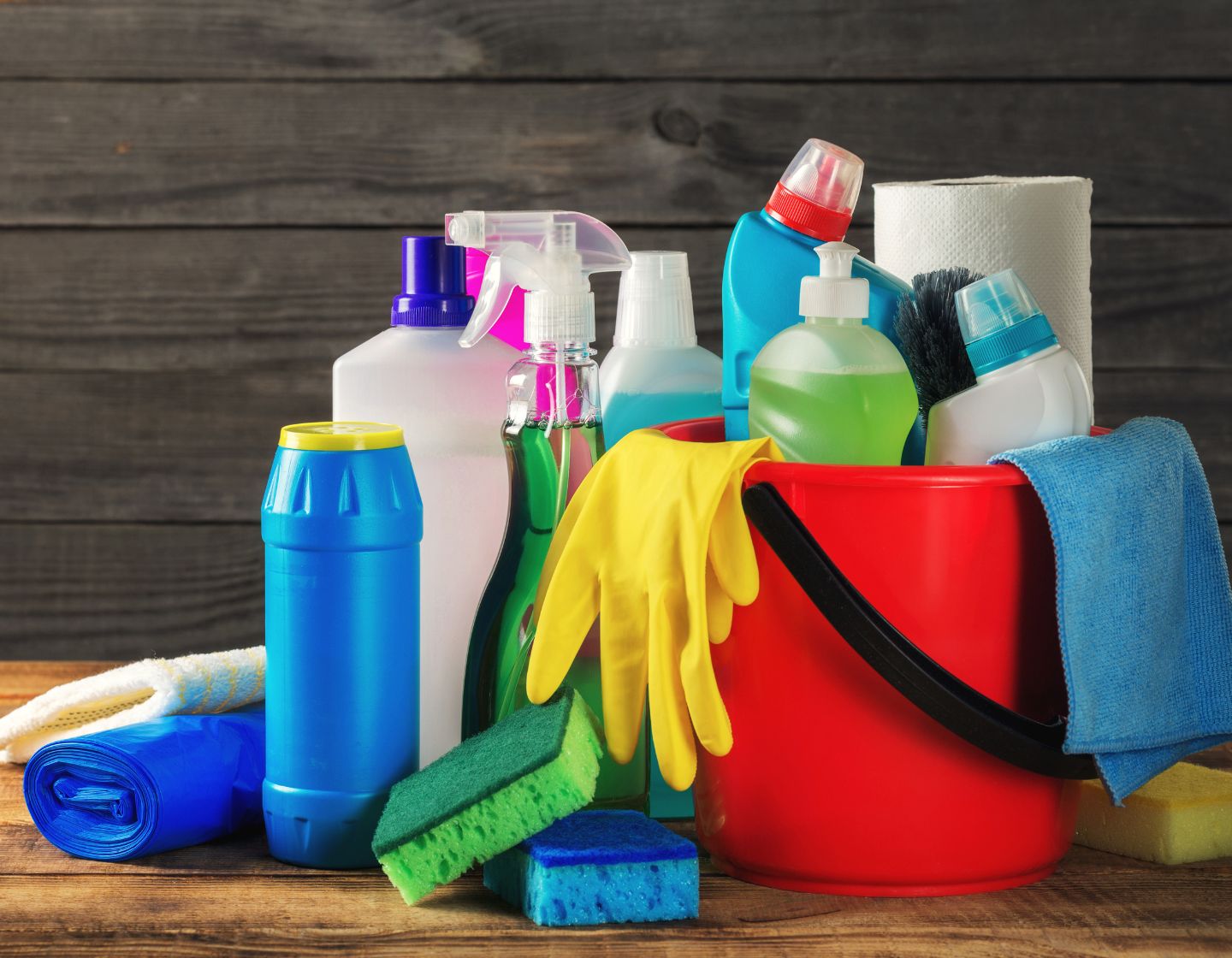
The good, the bad and the ugly: choosing a clean home and a healthy planet
We’ve covered the bad and the ugly. Now it’s time to end this article on a good note! We have a huge range of eco-friendly, non-toxic, cruelty-free and paraben-free cleaning products for your laundry routine, dishwashing routine and more. You won’t have to worry about reading a long list of ingredients because we only stock products that we genuinely believe in and provide full transparency.
By becoming informed consumers and consciously choosing natural and eco-friendly cleaning solutions, we can reclaim power and protect our health and the environment. Together, we can make a positive impact, reducing chemical exposure, minimising waste and creating a healthier and happier planet.

